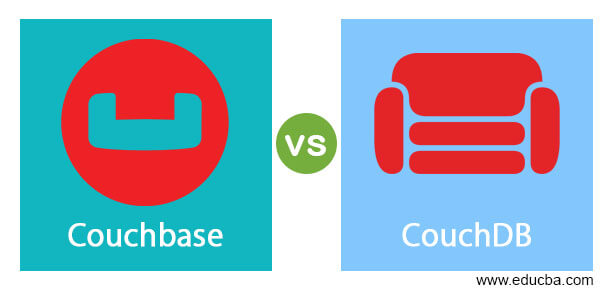Updated July 7, 2023
Introduction to Couchbase vs CouchDB
It is open source and has a distributed architecture. It engages the document stored in the database and makes it available for everyone. Apache develops CouchDB, which is similar to MongoDB in working and storing data in the database. This also gives importance to documents and is easily available to anyone.
Head to Head Comparison between Couchbase vs CouchDB (Infographics)
Below are the top 9 differences between Couchbase vs CouchDB:
Key Differences between Couchbase vs CouchDB
- Though both are open source and openly documented, the key-value store is only on Couchbase. Key-value store has the capacity to store, retrieve, and manage the arrays and also to take care of the data store like a dictionary. This helps Couchbase to use an associative array as a non-relational database to store data. This helps in storing multimedia and also large data.
- Couchbase has a strong consistency, while CouchDB has consistency depending on the data stored in the database. Though it does not offer the same consistency throughout, eventually, the data has consistency.
- The distributed topology helps to distribute the components in all the sites, while appended topology combines different components into one component to help in working.
- Couchbase handles its failovers gracefully by handling it automatically. Automatic failovers help to manage data systematically.
- Otherwise, the data is safe. CouchDB does not have this integrated cache and data has to be retrieved always. Also, Couchbase is compatible with Memcached data. CouchDB is not compatible and manages the data within the system.
- Couchbase has both optimistic and pessimistic locking, while CouchDB has only optimistic locking. Optimistic locking enables the user to check the database before updating data, while pessimistic locking updates data first and ensures that no one updates it again. CouchDB enables the locking with MVCC.
- Couchbase uses a query language in the database, whereas CouchDB does not have any query language. This helps to update and manage data with the help of SQL, while CouchDB has to check for the available languages in the system.
Couchbase vs CouchDB Comparison Table
Let’s discuss the top comparison between Couchbase vs CouchDB:
| Couchbase | CouchDB |
| Binary data can be stored easily in this, and it is stored with proper protocol and queries in the system. | Systems can store binary data using specialized data storage techniques and formats that are designed specifically for handling binary data. |
| N1QL, view, and key-value are used as queries to store data in the system, and this helps to manage the data in the database. | The system uses the view query to retrieve data, enabling the management of document contents. Users create a view, and they can query this view to retrieve the desired data. |
| This operates as a group of nodes, and the documents are copied to read from it. | All the nodes work individually, and the system stores data in the individual node to retrieve the data. |
| Cache is managed in the system, and the load is checked in the system, and only if it is not available data is loaded from the server. This makes the work easy for the database. | The system does not load data from the cache as it does not manage the cache. |
| The database clustering and distribution are written in Erlang, and the data handling is written in C and C++. | Community support is available, and the developers support the system for its working. |
| Notifications are provided in the system, and the protocol is changed with the help of the database. This helps to check the data and update it. | The data keeps the feeds updated and enables the provision of notifications when the system undergoes updates. |
| Couchbase is open source, but it depends on the versions released. Users can easily download the community version, while enterprise and developer editions are not freely downloadable. | CouchDB is fully open source, and users can easily download the versions depending on their usage. |
| There are APIs available, but HTTP APIs are not available in the system, and this is difficult for beginners. | HTTP APIs are available, and this makes the system easy to use. |
| Data can be spread over different nodes, and hence multi-master facility is available in the system. | The multi-master facility is not available in the system. |
Couchbase is faster when compared with others. We can use CouchDB for smaller applications, and this helps to maintain the system well.
Recommended Articles
This is a guide to the top difference between Couchbase vs CouchDB. Here we discuss the key differences with infographics and comparison tables. You may also have a look at the following articles to learn more –




